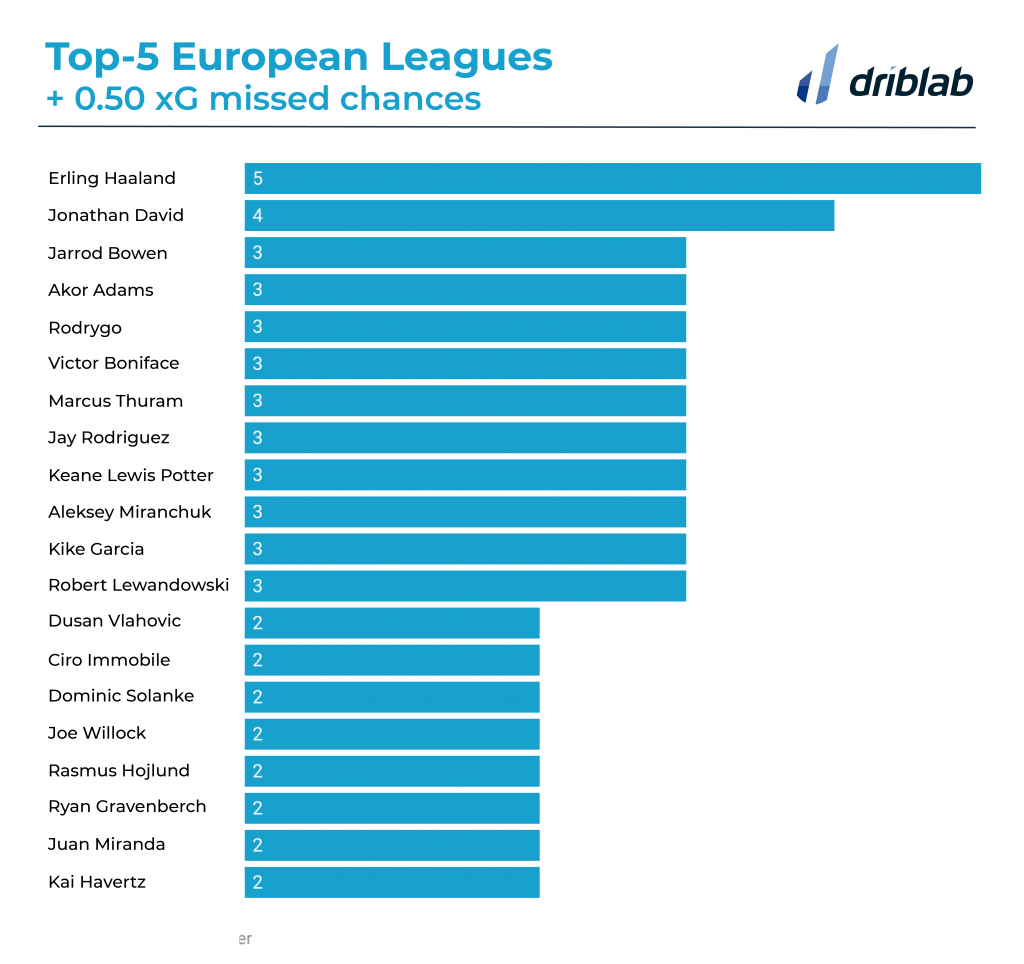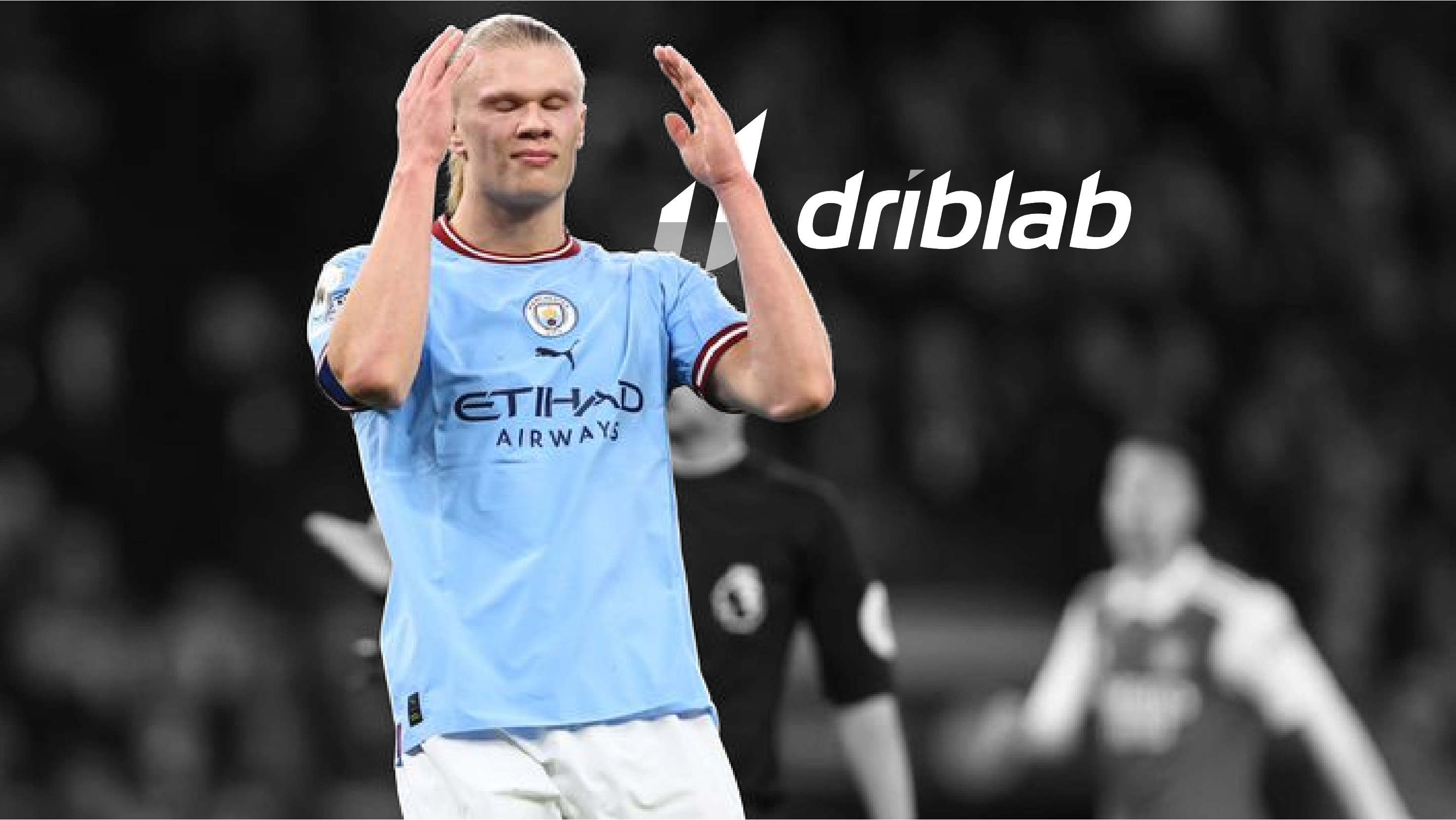It’s no coincidence that the players who miss the clearest chances are often the ones who score the most goals. It makes sense because their teams allow them to face higher-value chances more frequently, and therefore easier to convert. But this 2023-24 season is producing a very strange statistic, in fact, breaking a personal record. Erling Haaland is missing more than double the amount of big chances compared to the second in that statistic.
Although the expected goals model persists, albeit with fewer supporters or some skepticism about its way of analyzing goal-scoring efficiency, this text reflects its great usefulness. Let’s think about how we can search for a clear goal-scoring opportunity in a database. How do we identify it? How do we classify them to be able to refer to the record and compare the misses of one forward or another? We’re not talking about a dribble or a pass; we’re talking about “clear goal-scoring chances.” Defining it is much easier if we assign it a numerical value.
For this, we can agree that a probability of over 30% of it being a goal starts to become an important chance. And that over 50% enters the realm of big goal-scoring opportunities. Let’s see. In the top five European leagues, Haaland has missed 17 chances of 0.30 xG or more so far. That’s eight more than the second, Nicolás Jackson. Well, we can continue to think that Haaland has many more goal-scoring opportunities.

In the Champions League, something similar happens. Haaland has missed twice as many of these chances as the second, Lautaro Martínez. Eight chances for a finisher like Haaland is too many. In fact, it’s important to note. The Expected Goals model is designed to understand that top forwards, those who are on a streak or are simply excellent in finishing, break it, scoring well above what’s expected, as happened with Erling himself in all his previous seasons.

What if we raise the bar? One in every two chances created is converted. Chances with a value equal to or greater than 0.50 xG. Haaland has missed five in the Premier League 23/24, plus three in the Champions League, where he also leads this anomalous statistic.

To better understand the magnitude of the data and contrast it, this time it’s even more useful to focus solely on Haaland’s career. On our social media, we recently compiled how many chances Haaland had with those probability values and how many of them he scored. And it’s in that comparison where the data becomes crucial. Haaland has only converted 3 out of 20 chances in the Premier League with a 30% probability of being a goal. That’s 15%. In all the others, he reached a minimum of 50%, with peaks of 75 or 80%. There are too many clear chances missed.
Founded in 2017 as a consultancy, Driblab has driven innovation through data in all aspects of professional football. Thanks to a transversal model, its database collects and models statistics in all directions. From converting matches and videos into bespoke data for training academies to developing cutting-edge technology, helping clubs, federations and representative agencies in talent scouting and transfer markets. Driblab’s smart data is used by clubs all over the world, with success stories such as Dinamo Zagreb, Real Betis and Girondins Bordeaux among others. Here you can find out more about how we work and what we offer.














